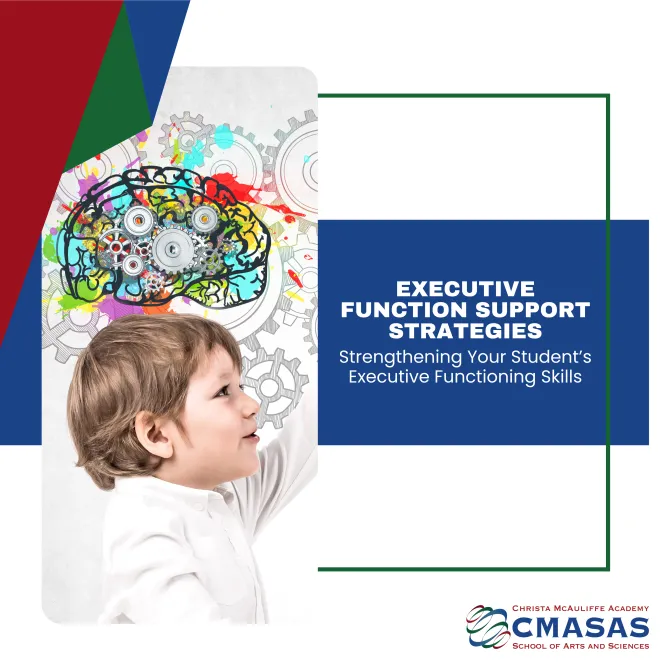STRENGTHENING YOUR STUDENT'S EXECUTIVE FUNCTIONING SKILLS

Big assignments and tasks tax all three components of executive function (working memory, flexible thinking, and self control), which can feel overwhelming for many students. But with consistent support and strategy, these skills can grow—just like a muscle.
Here are actionable ways you can help your student develop executive functioning skills at home:
Break down tasks into smaller checklists
At CMASAS, we help students manage large assignments by turning them into step-by-step checklists. Checklists and directions are not always the same. Directions tell students what they need to do; checklists show them how to approach it.
We encourage our PECs and CIs to help support students by helping them to review assignments and brainstorm the actions needed to complete them. By modeling how to tackle each part, we hope to create a pattern for how students can work independently to accomplish the bigger task at hand.
Show what “done” looks like
Many students who struggle with executive function have a hard time visualizing what “done” looks like. Give them a clear picture. Showing them a similar “done” assignment, will help them to see the end goal , so they can more easily work backwards to break it into manageable steps.
I’m a huge fan of building students’ growth points into checklists. So that students build a habit that directly addresses their points of improvement.
Build time management skills
Time management is one of the most important parts of executive function and one of the least taught. Here’s how to help:
- Encourage daily or weekly planners. Start with a simple daily or weekly planner. List tasks and assign realistic time slots.
- Track time. One of my favorite questions to ask my students is, “How long did it take you to do that?” Their answer, in conjunction with their activity in Buzz, gives an accurate idea of how much time they need to complete a similar task in the future.
- Color-coded & visual schedules. Color-coded planners or blocks by subject help students stay organized and on track.
- Timers and alarms. Alarms and timers can be very helpful management tools when students are working independently. They create structure. Encourage students to set alarms to remind themselves of meetings, breaks, and transitions back to focus.
Encourage metacognition and reflection
Metacognitive and reflective practices are perhaps the height of successful executive function. When we teach kids to think about their own thinking, we give them strategies and processes to lean on for future tasks. Ask reflective questions:
• “What is your plan for this task?”
• “What’s the first thing you need to do?”
• “How did that strategy work for you?”
• “What’s a time you’ve been successful at a similar task? What did you do then?”
If they say, “I don’t know,” work through it together. Question them deeply to get to the heart of their thinking and processes. Maybe the first step is opening the assignment, reviewing the prompt, or titling a document. Keep digging until they build confidence in their process.
Model it!
Executive functioning isn’t built through talk—it’s built through visible action. Show them what it looks like. Sit with them through it. The more we do it together, the more capable and independent they’ll become.
At CMASAS, we’re here to support every step of that journey.
